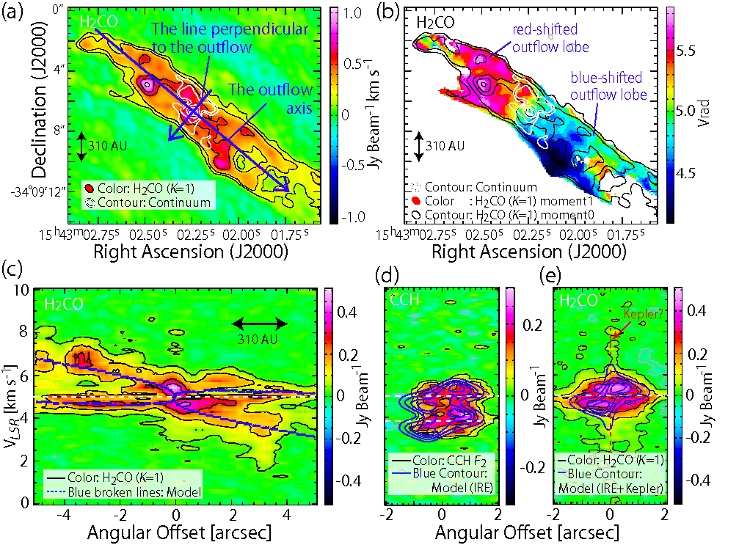| EPoS Contribution |
|
High Spatial Resolution Observation of the Low-Mass Protostar IRAS 15398-3359: A Growing Protostar with Very Low Mass?
Yoko Oya U Tokyo, Tokyo, JP | |
|
In the early stage of the protostellar evolution, a protostellar disk is formed around the protostar, which is eventually evolved into a protoplanetary disk. However, it is still controversial when and how protostellar disks are formed in the process of the low-mass protostar formation. In order to address this question, we conducted a high spatial observation toward the low-mass Class 0 protostar IRAS 15398-3359 in Lupus 1 Cloud as one of the early science projects of the Atacama Large Millimeter/Submillimeter Array (ALMA).
IRAS 15398-3359 is known to have a warm region harboring abundant carbon-chain molecules in the vicinity of the protostar, and hence, it is recognized as the second warm carbon-chain chemistry (WCCC) source after L1527 in Taurus. In this observation, we obtained the sub-arcsecond (0".5) images of the H2CO and CCH emissions in the 0.8 mm band. We have found a component concentrated in the vicinity of the protostar and a well-collimated outflow cavity extending along the northeast-southwest axis. Though the outflow in this source has been thought to have a relatively pole-on geometry, the inclination angle is found to be about 10 degree, or almost edge-on, on the basis of the kinematic structure of the outflow cavity. On the other hand, the centrally concentrated component around the protostar should be a protostellar envelope or a disk component. We have found that the observed kinematic structure is well explained by a simple toy model of the infalling rotating envelope with the estimated inclination angle of 10 degree and the protostellar mass of 0.02 Msun. Then, the ratio of the protostellar mass to the envelope mass is found to be as low as 0.04. In addition to the infalling rotating envelope, high-velocity components concentrated around the protostar are detected in the H2CO line. This may indicate that the disk structure has already been forming in IRAS 15398-3359 despite that the source is in the infant stage of the protostellar evolution. This result will provide us with important constraints on the physical and chemical conditions in the early stage of the disk-formation. | |
 | |
| Caption: (a-b) Moment 0 map (a) and moment 1 map (b) of H2CO toward IRAS15398-3359. (c) Position velocity diagram of the H2CO line along the outflow axis shown in (a). The blue broken lines represent the model simulation of the outflow cavity with the inclination angle of 10 degree. (d-e) Position velocity diagrams of the two hyperfine components lines of CCH (d) and the H2CO line (e) along the line centered at the protostar and perpendicular to the outflow axis shown in (a). The blue contours represent the model simulations of the infalling rotating envelope and the Keplerian disk with the protostellar mass of 0.02 Msun. Note that the disk component is not involved in the model for CCH (d). | |
| Collaborators: N. Sakai, U Tokyo, Japan T. Sakai, U Electro-Communications, Japan Y. Watanabe, U Tokyo, Japan T. Hirota, NAO, Japan J. Lindberg, U Copenhagen, Denmark S. Bisschop, U Copenhagen, Denmark J. Jorgensen, U Copenhagen, Denmark E. van Dishoeck, Leiden Observatory, Netherlands S. Yamamoto, U Tokyo, Japan |
Suggested Session:
Cores to Disks |

